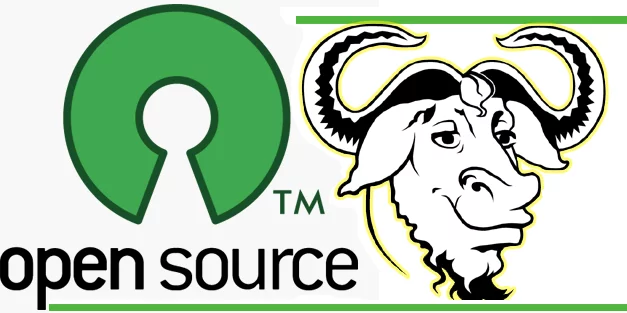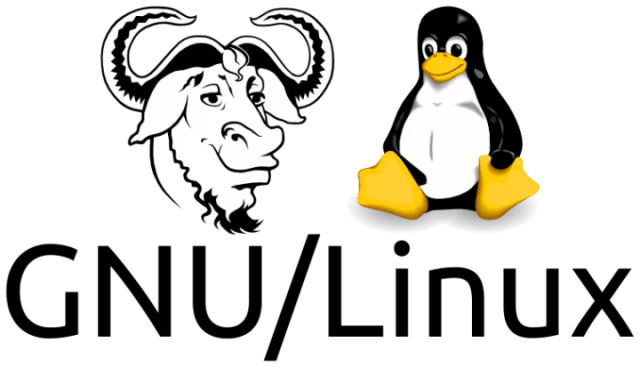With limited computer technology conditions at that time because computer systems had not been discovered long ago and were still in the research and development stage, Linux was not the first operating system created, there were already predecessors such as Unix and Windows.
Read: History of the Development of Computers and operating systems
At that time, the operating system was attached to the hardware/computer itself and was only designed to run on that computer, before there was no such thing as changing the operating system, all that was left was buying a new computer with a new operating system.
Several groups conducted research to find an operating system that could be used on all computers, the group was AT&T which made Unix and Microsoft which made MS.DOS and then Windows.
Unfortunately, all of these operating systems are paid and licensed, making it very difficult for developers to develop an application that must run on their platform due to the lack of documentation for the OS.
From this problem emerged the GNU community as a forum for developers to share program code with each other and develop it together to create free and open source applications and even free and open source operating systems.
Starting from GNU as a Pioneer and Opensource Container
Without GNU Linux might not exist, GNU holds an important war in the creation and development of Linux, because in GNU the open source community gathers and works together to create free and open source applications.
In 1983, Richard Stallman created the GNU project with the goal of creating a free operating system that was similar and compatible with UNIX.
GNU stands for “GNU’s Not Unix” and GNU is not a profit company but a forum for a community that upholds Free and Opensource software.
Free here does not mean free but is defined as “freedom” because applications licensed by the GPL (GNU General Public License) provide 3 freedoms for users, namely free to:
- use
- distribute
- and change for development,
This freedom is not owned by proprietary software (commercial software).
The GNU project started in 1984 with the creation of software, compilers, editors, text formatters, GUIs, libraries, modules and many more, in the process of building it is designed to be compatible with existing operating systems, namely UNIX, this choice is based on UNIX’s proven design. superior and portable.
In the process of making it involved many people from the GNU community itself.
Before Linux, UNIX OS Existed
Linux history began after the emergence of the UNIX operating system which was introduced to the public around the 1970s which was developed and released by AT&T Bell Laboratories.
Unix is a motivation for all parties to compete to develop an operating system similar to UNIX (Unix like operating system).
BSD OS Born From UNIX Development
In 1977, the Computer Systems Research Group (CSRG) of UC Berkeley, developed the Berkeley Software Distribution (BSD) operating system and used AT&T’s 6th edition of UNIX code.
AT&T did not accept it because the code was used to make BSD and filed a lawsuit, after a lawsuit the development of an operating system based on the BSD code became stalled.
Linus Torvalds, Creator of the Linux Kernel

In 1990 GNU has made all the components to make an operating system from compilers, libraries, applications, user interfaces and so on and only one that has not been completed, namely the Kernel which is the core of an operating system.
In 1991 Linus Torvalds a student majoring in Computer science from the University of Helsinki (University of Helsinki) wrote an independent operating system to be able to run on his new PC that uses an 80386 processor.
The process of making this operating system kernel (which will later be named the Linux kernel) was completed using MINIX and compiled using the GNU C compiler.
Linux Is Not UNIX
That means Linus torvalds was the first to design, build and develop the linux kernel. In its manufacture, Linux does not use Unix code at all. Unix was only used as inspiration by Linus when making the Linux kernel.
The History of Linux Development Until Now
The kernel which is the core of an operating system has indeed been created by Linux Torvals, a student from the University of Helsinki Finland, but Linux has a long way to go until it becomes a sophisticated and popular operating system that you can use for free now.
Linux Kernel First Version Published
The kernel created by Linus is then published for the wider community (opensource) and everyone can use and develop it “free”.
On August 25, 1991, at the age of 21, he published his first Linux kernel via ” Usenet ” (a kind of internet at that time) in a newsgroup forum “comp.os.minix.”
Linux Writes Notes For Its Published Kernel
Hello everybody out there using minix –
I’m doing a (free) operating system (just a hobby, won’t be big and professional like gnu) for 386(486) AT clones. This has been brewing since april, and is starting to get ready. I’d like any feedback on things people like/dislike in minix, as my OS resembles it somewhat (same physical layout of the file-system (due to practical reasons) among other things).
I’ve currently ported bash(1.08) and gcc(1.40), and things seem to work. This implies that I’ll get something practical within a few months, and I’d like to know what features most people would want. Any suggestions are welcome, but I won’t promise I’ll implement them
Linus ( torvalds@kruuna.helsinki.fi )
PS. Yes – it’s free of any minix code, and it has a multi-threaded fs. It is NOT portable (uses 386 task switching etc), and it probably never will support anything other than AT-harddisks, as that’s all I have :-(.
— Linus Torvalds
With the help of the linux kernel community the first version was published
This kernel will later become the Linux kernel that we use today as a result of the development of the open source community from time to time.
The Origin of the Linux Name
The name linux does not appear and is used just like that for the Linux kernel, it was used by several names that sound strange to us now.
Linus torvalds wants to call his findings by the name Freax which is a combination of free freak and X which refers to Unix.
while he was working on writing the kernel he kept it in a file and named it Freax for almost half a year.
Linus actually had crossed his mind to name his findings with the name Linux but he thought it was too selfish (because it contains his own name).
To facilitate the development process, the file was uploaded to the FTP server (ftp.funet.fi) in September 1991.
Ari Lemmke from the University of Helsinki who was then a volunteer FTP administrator thought that the name Freax for a kernel was not good to hear, so without Linus’ approval he changed the name of the kernel to Linux.
But Linus didn’t mind the name and used it too.
The History of the Linux Mascot Penguin
In 1996 Linus Torvalds officially announced the Linux mascot, a Penguin with the name Tux.
Linus explained that he chose the penguin because he had bad memories with the animal, namely being bitten by a small penguin during a visit to a zoo in Australia.
Linux held a contest to design a linux logo (penguin) and was won by Larry Ewing with a picture of a sitting penguin named Tux, Tux refers to Torvalds’ UniX and also means tuxedo, a kind of suit whose color is similar to the penguin.
Linux under the GNU GPL license
When initially published, Linus’s kernel used its own license and there was a prohibition / should not be used for commercial purposes because he made the kernel dedicated to the opensource community.
The software used to make Linux all use applications licensed by the GNU GPL (a license for free software) and so that Linux can be used as a complete operating system, Linux requires components such as shells, compilers, libraries, etc., all of which are under the GNU GPL license.
Finally in 1992 Linux version 2 was released to the public in December under the GNU GPL license so that Linux was called GNU/LINUX.
At the launch of the first Linux version, Linus only wrote in his documentation that to be able to use Linux completely, he needed the software provided by GNU.
Linux Community and Distro
The biggest contribution of linux development work comes from the linux user community itself which consists of thousands of programmers spread all over the world, they use linux and give advice to make linux much better every day to linux developers.
Several companies that provide Linux services also take part in the development of Linux, not only the kernel but supporting applications that are included in the Linux distribution such as auxiliary software.
Organized companies / projects develop their own Linux and continue to distribute it for free, because all Linux is GPL licensed.
To make money as a cover for the operational costs of an organized company / project, it only provides consulting services and services for enterprise Linux users.
Community belonging and legal entities (companies / projects organized) or what we call today with Linux distributions (Linux distribution) to develop and distribute their own versions of Linux with the beginning of the project Slackware, Debian, Redhat, SUSE.
Although using the same base kernel, the applications and utilities provided by these distributions are different, this difference is not significant, only some commands and hierarchies are different from other distributions.
Linux Kernel Development Timeline
The Linux history exposed above is a summary and historical outline that I took from the wikipedia reference and the official GNU project website, I intentionally wrote it briefly so that you don’t get bored to read and at least understand the history of Linux in outline.
The timeline of Linux history and development can be summarized in the following chronology:
- 1991 : Linux kernel published to the community for development purposes on 25 August
- 1992 : Linux kernel license was changed to GNU GPL and for the first time Linux became a complete operating system and can be used immediately without the need to install supporting GNU applications separately.
- 1993 : More than 100 developers participated in the linux kernel development process, with their help the kernel was adapted to the GNU environment. Slackware became the oldest distribution still standing today(2017) followed by debian which became the largest distribution today (2017)
- 1994 : Linus Torvalds decides that all components of the kernel are completely mature and then he releases Linux version 1.0, the XFree86 project contributing to the creation of the Linux GUI. The commercial version of SE linux distro also released Linux with version 1.0
- 1995 : Linux is adjusted to run on new processor platforms, namely DEC Alpha and Sun SPARC processors. Both processors are the most modern processors at that time.
- 1996 : Linux kernel version 2.0 was released with a new feature, namely the Linux kernel can run on various processor platforms using symmetric multiprocessing (SMP).
This method is an alternative choice used by many companies. - 1998 : Many large companies such as IBM, Compaq and Oracle announced product support for Linux.
An essay by The Cathedral and the Bazaar (which later became a book) which tells the author’s experience of the method when developing the Linux kernel in open source projects has had a tremendous impact on open source projects after they were published. It was because of this writing that Netscape decided to join the opensource community by publishing the source code of the Netscape Communicator Web browser suite.
On the other hand a group of programmers started to build KDE’s graphical user interface (GUI). - 1999 : A group of application developers work together on a GNOME Graphical environment project designed to replace KDE. In the same year IBM also announced additional projects to support Linux.
- 2000 : Dell announces that it is now the number 2 provider in the world that uses Linux in all of its products
- 2002 : Long story short, Microsoft killed Dell Linux, not only Dell, Microsoft also threatened other hardware vendor companies that campaigned for Linux.
- 2004 : the Xfree86 project team split up and merged with the X standards project which later became the X.Org Foundation which worked faster to develop an X server for Linux
- 2005 : The openSUSE project begins free distribution for the Novell’s community, as does the Openoffice.org project which introduces version 2.0 with support for the OASIS OpenDocument document format standard.
- 2006 : Oracle releases its own Linux distribution, namely Red Hat Enterprise Linux (RHEL), while Novell and Microsoft cooperate in protecting the use of patents.
- 2007 : Dell started to market laptops with the default Linux operating system Ubuntu distribution.
- 2009 : RedHat’s market development is on par with Sun’s, which is interpreted as a symbolic moment for the “Linux-based economy”.
- 2011 : Linux kernel version 3.0 released
- 2012 : Linux market exceeds Unix market in Server class market type
- 2013 : 75% of mobile phones on the market use an operating system based on Linux (Android)
- 2014 : Ubuntu claims to have 22 million users
- 2015 : Linux kernel version 4.0 released to the public
- 201 9: Linux kernel version 5.0 released to the public
The Cathedral and the Bazaar is an essay written by Eric S. Raymond in the form of an essay that explains 2 striking differences in the development process of free applications (Free software).
- The Cathedral model, where the source code is included when releasing a software but during the development process the source code may not be shared with other application development groups.
- The Bazaar model, where code is developed over the internet and anyone can see minor changes to the application code, Raymond credits Linus Torvalds, the lead of the Linux kernel project for inventing this process.
Sources of information: Wikipedia and gnu.org


